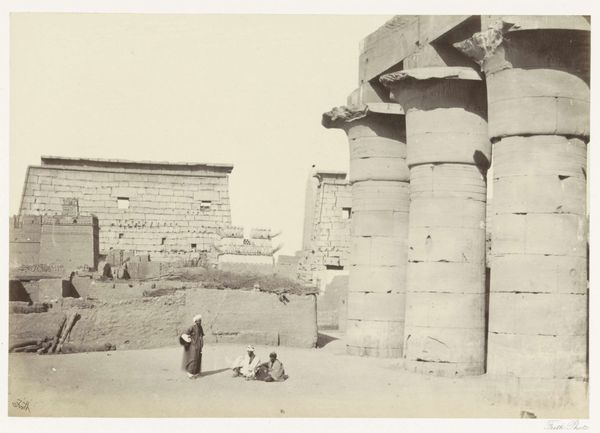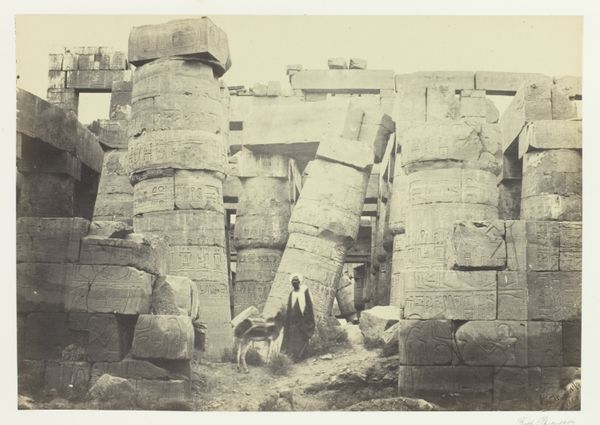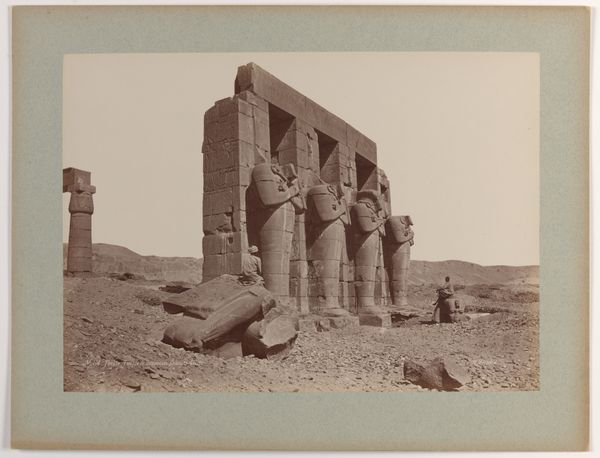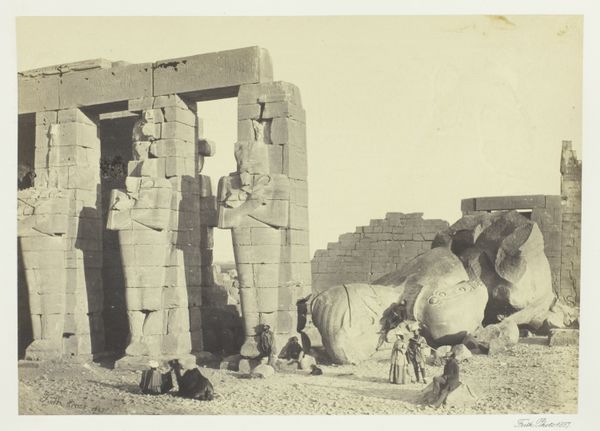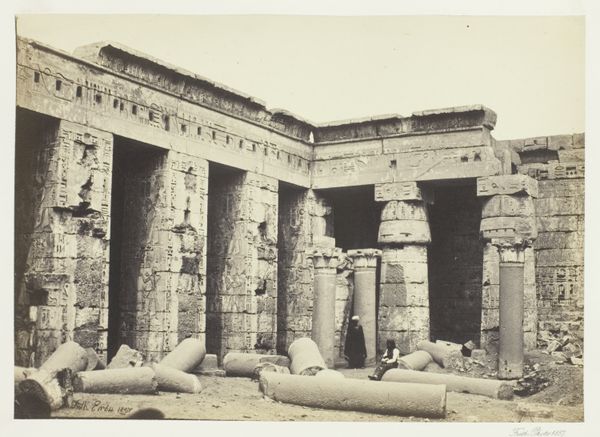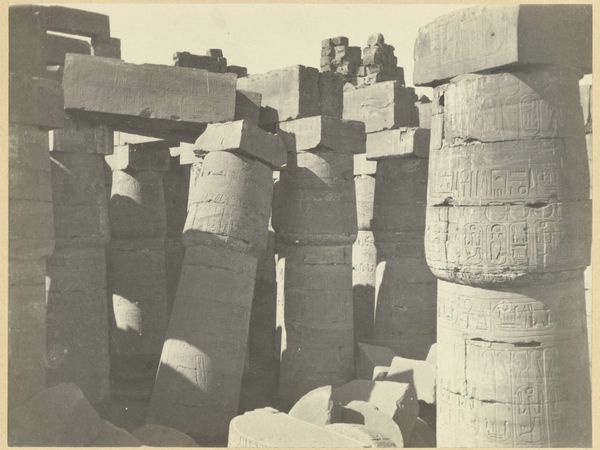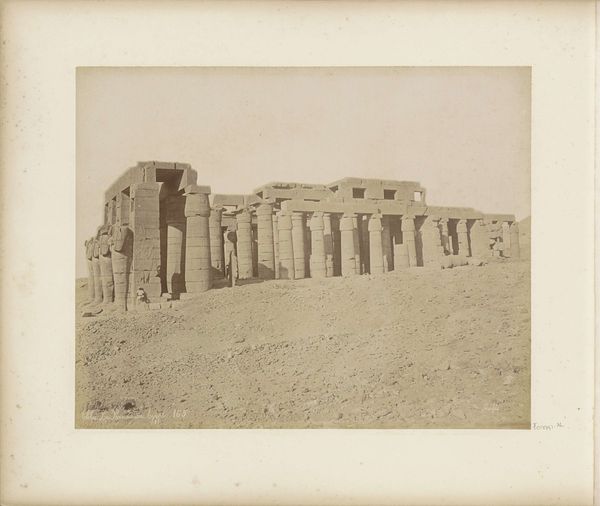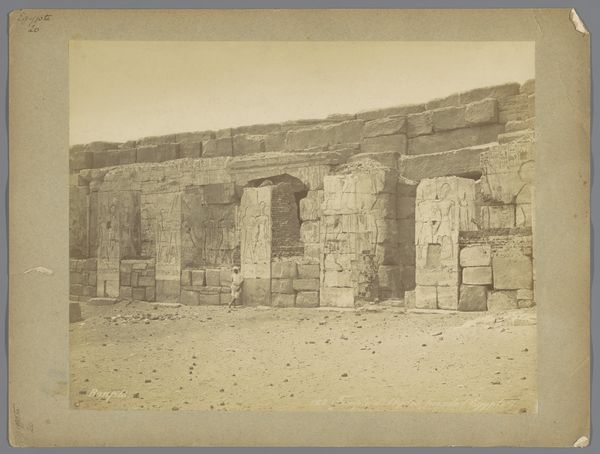
print, photography, gelatin-silver-print
#
print photography
# print
#
landscape
#
ancient-egyptian-art
#
outdoor photograph
#
outdoor photo
#
photography
#
egypt
#
ancient-mediterranean
#
orientalism
#
gelatin-silver-print
#
cityscape
Dimensions: 16 × 23 cm (image/paper); 29.1 × 42.6 cm (album page)
Copyright: Public Domain
Editor: So, this is Francis Frith's "View at Luxor," a gelatin-silver print from 1857. It feels…stark, almost like a document. I'm struck by the weight of those massive columns, the evidence of immense human effort. What do you make of it? Curator: The first thing that strikes me is not just the weight of the columns, but the labor involved in their creation and transportation. Who were these people? Were they slaves, paid workers, conscripted laborers? This image, presented as a sublime vista of antiquity, actually speaks volumes about the socio-economic structures required to produce such grandeur. Editor: That's fascinating. I was focused on the visual aspect, but thinking about the sheer manpower changes everything. It highlights the inherent inequalities. The process is a key element, right? Curator: Absolutely. And the material itself – where did this stone come from? How was it quarried, shaped, moved? It's a story of resource extraction, of human manipulation of the environment on a massive scale. How does Frith, as a European photographer, fit into that narrative? Editor: He’s documenting it, benefiting from it, almost a modern form of… excavation? He’s consuming the scene and sharing it to others to consume the spectacle of Luxor, using technological process that othered its subject in this representation. Curator: Precisely. The very act of photographing, printing, and distributing these images becomes another layer in the process, embedding this ancient site within a system of colonial-era consumption. Frith’s prints were luxury items, contributing to a burgeoning market for exotic imagery and reinforcing a specific power dynamic. Does it shift your perception? Editor: It really does. I see how much is hidden beneath the surface, the intricate relationships between labor, resources, and cultural appropriation embedded within the photograph itself. Curator: It reveals how even seemingly straightforward representations are laden with the material realities of their making and circulation. A truly remarkable point that is relevant beyond the photo studio, especially when studying labor or commodity flows today.
Comments
No comments
Be the first to comment and join the conversation on the ultimate creative platform.
